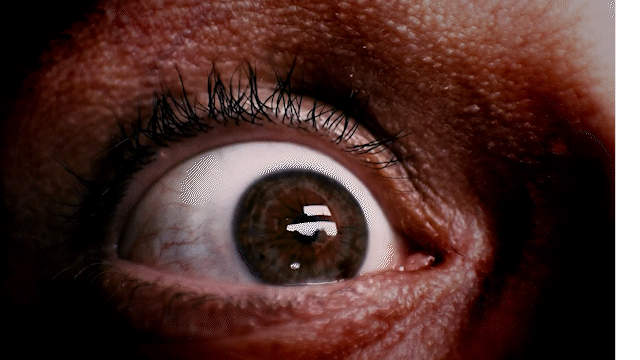Can Breathwork Release Trauma?
Nov 29, 2022
In previous years, trauma research mainly focused on veterans' experiences or violent crime cases, but we now know that trauma is much more prevalent than we realized. Trauma isn’t just about the event itself; it is about how your body and mind respond to it.
We all can react differently to events, and learning to release the trauma response is essential to the healing process. Today we will explore the intricacies of trauma and whether or not you can use breathwork to release trauma and access deep healing from within. Now, let’s dive in!
What Happens to the Body After Trauma?
 When a traumatic event occurs, your body and mind can respond in different ways. This response pattern is known as the fight-flight-freeze-fawn response. Essentially, when a traumatic event happens, your body will either jump up to fight, push you to run away, freeze in the moment, or shift into a fawn or appeasement mode to calm down the attacker.
When a traumatic event occurs, your body and mind can respond in different ways. This response pattern is known as the fight-flight-freeze-fawn response. Essentially, when a traumatic event happens, your body will either jump up to fight, push you to run away, freeze in the moment, or shift into a fawn or appeasement mode to calm down the attacker.
All of these responses are entirely normal and are our body’s adaptive ways of protecting us in a moment of survival. When your body shifts into any of these response modes, it triggers a cascade of stress hormones throughout your body, sending messages to your nervous system on what to do next. You may notice your breathing rate increasing, your blood pressure rising, a sensation of heat moving through your body, or your muscles tensing up.
These physical responses prepare your body to react in the moment. But the issue arises when your body remains chronically stuck in this response pattern. Over time, your health may begin to deteriorate, leading to autoimmune disease, chronic pain, metabolic syndrome, and many other chronic health conditions.
How Breathwork Can Release Trauma
Now, hearing all of this stressful information can sound overwhelming to anyone. So, let’s take a deep breath for a moment and remember that even though the trauma response can be serious, it can also be reversed! Healing is possible.
In fact, your body has a natural in-built mechanism to release the trauma response and heal from within. And the powerful secret tool to accessing this in-built mechanism is through your breath.
Breathwork can support your body in releasing trauma and balancing your nervous system. When your body is in an active trauma response, your breathing rate starts to quicken. By consciously slowing down your breath, you can send a message to your nervous system that there is no danger and begin to shift into rest-and-digest mode.
Additionally, slow and conscious breathing can gently tone your vagus nerve, which is the main cranial nerve that regulates your nervous system and connects to many other systems of your body. The vagus nerve runs through your abdomen and around your lungs, and through slow, deep breaths, you can stimulate the vagus nerve, sending a message to your brain to shift out of a trauma response.
Over time, breathwork can begin to shift your nervous system out of its chronic activation mode, engaging in the deep healing process of cognitive restructuring. The increased oxygenation in your body can also support your brain function, giving you greater access to all the areas of your brain and an increased ability to access resources to heal from within.
How to Use Breathwork to Release Trauma
 Breathwork is not just a way to relax and feel good; it can actually support your body in the healing process from trauma. Whether you have just experienced a traumatic event or you are recovering from the chronic impacts of complex trauma, breathwork can be profoundly healing to support your body, mind, and soul. There are many different ways to use breathwork to release trauma. No matter what technique you use, there are some crucial factors to keep in mind when using breathwork for trauma recovery.
Breathwork is not just a way to relax and feel good; it can actually support your body in the healing process from trauma. Whether you have just experienced a traumatic event or you are recovering from the chronic impacts of complex trauma, breathwork can be profoundly healing to support your body, mind, and soul. There are many different ways to use breathwork to release trauma. No matter what technique you use, there are some crucial factors to keep in mind when using breathwork for trauma recovery.
-
Start Simple
Breathwork for trauma doesn’t need to be fancy or overly complicated. In fact, the simpler you keep your breathwork practice, the better. Particularly if you are new to breathwork or dealing with complex trauma, just practicing simple, deep breathing can have a profound impact on your trauma healing process.
-
Focus on the Exhalation
Research shows that the best way to tone the vagus nerve is by extending your exhalation. A longer exhalation activates the relaxation response and helps switch your nervous system into rest-and-digest mode. An excellent way to practice this is by extending your inhalation to a count of four and your exhalation to a count of six.
-
Deepen the Breath
Another essential component in breathwork for trauma is to focus on deepening the breath in the body and increasing your utilization of the diaphragm. Diaphragmatic breathing involves using your abdomen rather than your chest to send your breath further down into the body. This simple breathing technique naturally slows down your breathing and helps to relax your body and mind from within.
-
Relax Into Rhythm
Trauma is inherently dysregulating for the body and mind, so finding greater regulation through simple breathing techniques can help restore the feeling of relaxation. During any breathwork technique, try to find comfort and rhythm in your breath, shifting into a regular pace of breathing that can harmonize your body, mind, and soul.
-
Proceed Slowly
Working with trauma through the breath can be immensely powerful, which is why it is essential to move slowly through these practices and reach out for support. At times, breathwork can also feel activating for the nervous system and may trigger a trauma response. During these moments, it is vital to draw on your resources and gently back out from the practice. Try to use somatic techniques to calm down your body and increase a sense of grounding.
It is also helpful to have a trained trauma-informed breathwork facilitator to guide you through these practices. Breathwork can be profoundly beneficial for trauma release, but be cautious of engaging in too many breathing practices, particularly if you struggle with dissociation. Some trauma-informed facilitators recommend beginning with body-based and somatic techniques to increase grounding before starting breathwork practices.
Learn Breathwork to Release Trauma
So, to answer the question – can breathwork release trauma? The short answer is yes! Breathwork is one of the most powerful tools to support your body and mind in trauma recovery. If you are interested in learning more about breathwork, make sure to check out some of my breathwork courses to guide you through a few essential breathing techniques to support you on this profound healing journey.
Breath Energy Newsletter
The Breath Energy Newsletter comes out on the first Friday of every month. It includes a conscious breathing practice, a body-mind topic and announcements.
Enter your email and sign up for free right now
No Spam. Unsubscribe at any time.

